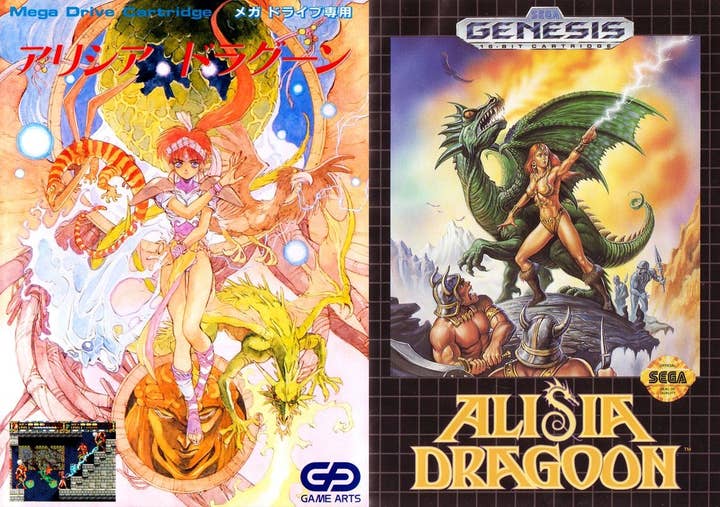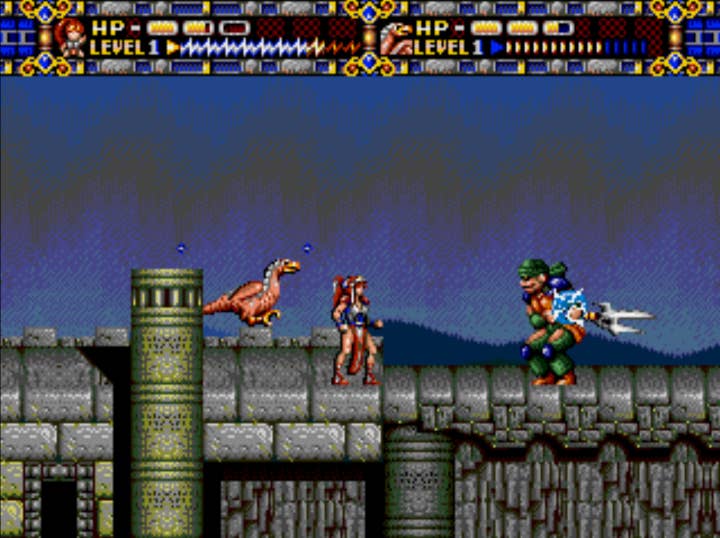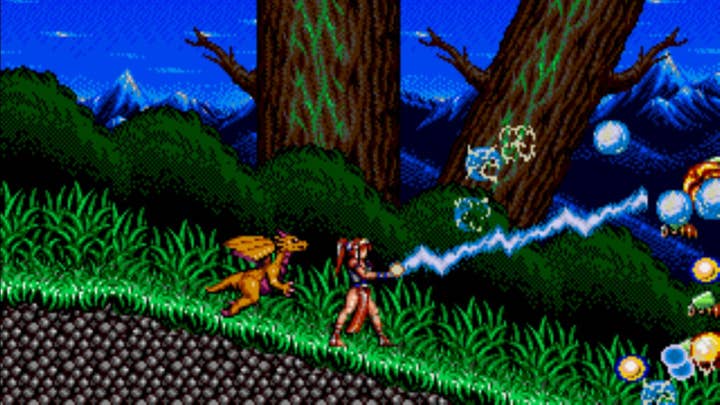Why I Love: Alisia Dragoon
Wanted: Dead publisher's Sergei Kolobashkin celebrates an underappreciated gem from Sega's 16-bit heyday
Why I Love is a series of guest editorials on GamesIndustry.biz intended to showcase the ways in which game developers appreciate each other's work. This entry was contributed by Sergei Kolobashkin, founder and creative director at 110 Industries, who have just launched Wanted: Dead a new hybrid slasher/shooter from the makers of Ninja Gaiden and Dead or Alive on PlayStation, Xbox and PC.
Let's take the nostalgia glasses off for a minute and face it - the Sega Mega Drive wasn't that good of a platform. An occasional QuackShot, Comix Zone or Streets of Rage 2 did happen every once in a while, but the console was primarily a Sonic player.
Sega had a lineup of games in mind that represented what the console is capable of and it was primarily Sega grind fests like Ecco the Dolphin (sorry Ed, you know, I love you, man), Gunstar Heroes and Golden Axe, with a dash of Mortal Kombat II and NBA Jam at the tail end. Then you had your retro engineered Electronic Arts titles that looked pretty bad in the '90s and have only gotten only worse all these decades later.
If you look up any Genesis Top 10s or Top 15s list, you will never be able to spot Alisia Dragoon, the title in question for today's conversation. Such a shame.

Conceived by Gainax and Game Arts, Alisia Dragoon launched in February 1992 in the United States. The game features character and creature designs made by Gainax and a story written by Yoshimi Kanda, previously responsible for Wings of Honneamise and Gunbuster.
The game didn't make waves in Japan but was well received in the West. Curiously enough, in order to avoid a collective trauma in the ranks of Western gamers, the incredible artwork of the Japanese version of the game was swapped for a generic Red Sonja clone with a big ass green dragon by her side.
Alisia Dragoon spans eight stages with multiple areas and cutscenes featured in each. This might not seem that notable today, but bear in mind, this wasn't common back then and made the game's world and story seem feel ambitious and epic to me as a young kid being awed by its scope. Alisia Dragoon's compelling story really got its hooks into me, set in a sci-fi/fantasy world that delivered dragons, guns, and an alien demon name Baldour that's about to hatch from his cocoon and has to be stopped by Alisia. What more could a kid ask for?

Something that I think made the game stand out to me at the time and one of the reasons that I still rate it today is because of how varied it is. The folks at Game Arts made no shortcuts while working on the game: each level has something new to offer, visually and stylistically.
As you progress further through the game, the fantasy setting slowly shifts towards a hard sci-fi look. The transitions between the levels are absolutely incredible for 1992. At some point Alisia Dragoon completely abandons its fantasy roots as the players fight through a crashed spaceship fighting battle droids. That collision of styles and the transition between the two was not only striking, but only enhanced my feeling that I was undertaking an epic adventure.
Alisia conjures streaks of lightning from her hands. It's not like there's infinite ammo, she needs to recharge all the time and this is where the strategic component comes into play. Alisia is accompanied by four companions, a boomerang tossing lizard, a radioactive beam smiley face, a bird that occasionally clears the screen with a lightning attack and a rather small green dragon. All companions have a basic RPG progression and can be leveled up during the course of the game, as can Alisia - her lightning bolts hit harder and the life bar expands giving the player more chances along the way. I really loved the idea of having a companion fighting alongside you and it was great fun switching them out and see which one was most effective for you in each stage.

Alisia Dragoon did something incredibly ballsy for the early '90s. It made a conscious decision to feature a female protagonist in an action game back at a time when that wasn't done. Samus Aran had already appeared in Metroid of course and is a commonly cited moment for female characters from that era, but given that even to this day, there's a lot of people that think Samus is a dude, I don't think she's necessarily the best example. The fact that she was hidden and only revealed to be a woman at the end shows you that, back in the early '90s, a female action hero was too ballsy.
Featuring Alisia as the main character in a fantasy/sci-fi game was a risk that unfortunately didn't pay off. Things have changed quite a lot when it comes to where we are today with female leads in games, but I like to think of Hannah Stone from our new game, Wanted: Dead, as at least something of a tribute to that character that inspired me all the way back with Alisia Dragoon: a cool female action hero that was way ahead of its time.
Developers interested in contributing their own Why I Love column are encouraged to reach out to us at news@gamesindustry.biz.
